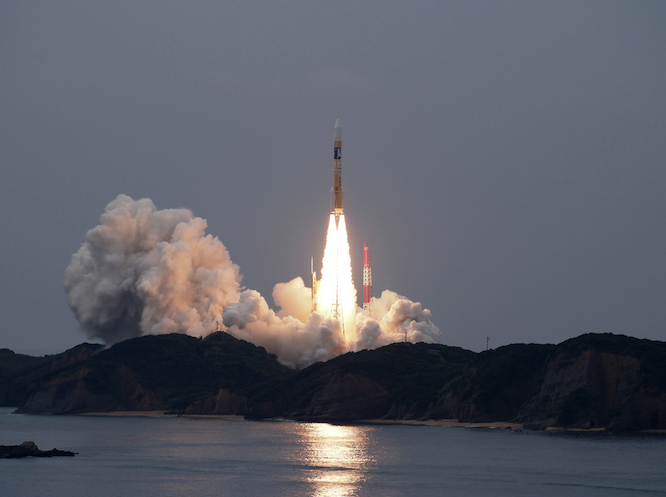An H-2A rocket has launched the second satellite in Japan’s Quasi-Zenith Satellite System (QZSS) constellation, designed to enter service in 2018.
Japan has successfully launched the second satellite in its regional space-based navigation constellation, the Quasi-Zenith Satellite System (QZSS), also known as Michibiki. The QZSS orbit passes through the near zenith over Japan, hence the name.
A Japanese H-2A rocket carrying the Michibiki 2 satellite lifted off from the Tanegashima Space Center on 1st June, just after midnight local time. The H-2A — flying its 34th mission — performed as planned, and the separation of the satellite was confirmed 28 minutes 21 seconds after launch.
Built by Mitsubishi Electric Corp., Michibiki 2 will join Japan’s first Michibiki satellite launched nearly seven years ago. The first satellite was used to carry out technical verifications in an initial phase. The constellation is planned to comprise four satellites by 2018, with a possible expansion to seven satellites at an unspecified future date.
QZSS is designed to complement and augment the U.S. GPS constellation. Sharing almost the same positioning signals for transmission with the GPS satellites, the system aims to expand the areas and time duration of the positioning service provision in mountainous and urban regions in Japan.
The Japanese system is intended to improve positioning accuracy, reducing the conventional GPS error to between 1m and 1cm by transmitting support signals and through other means.

